¶ Introduction
The condition known as dynamic roll-over is an uncontrolled rolling situation when a helicopter is in contact with the ground with only one skid or one wheel.
¶ The Forces Involved in Dynamic Rollover
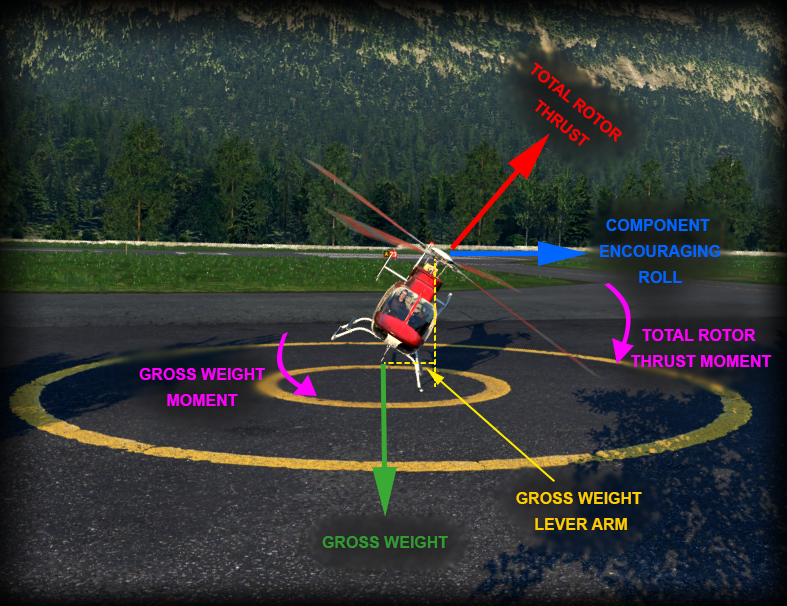
* Roll Component: This is the horizontal component of total rotor thrust about the point of ground contact of the skid/wheel.
The horizontal component of total rotor thrust changes proportional to the angle of bank. If the angle of bank or roll is small, the horizontal component is small or vice versa; if it is big the horizontal component is big.
* Weight of the aircraft: This component is positioned between the wheels/skids and opposes the roll component.
The opposing effect of this component decreases as the bank of the helicopter increases.
¶ Critical angle
This is the angle where cyclic input will not be able to stop further roll. The roll component is too big and the opposing effect of gross weight is too small.
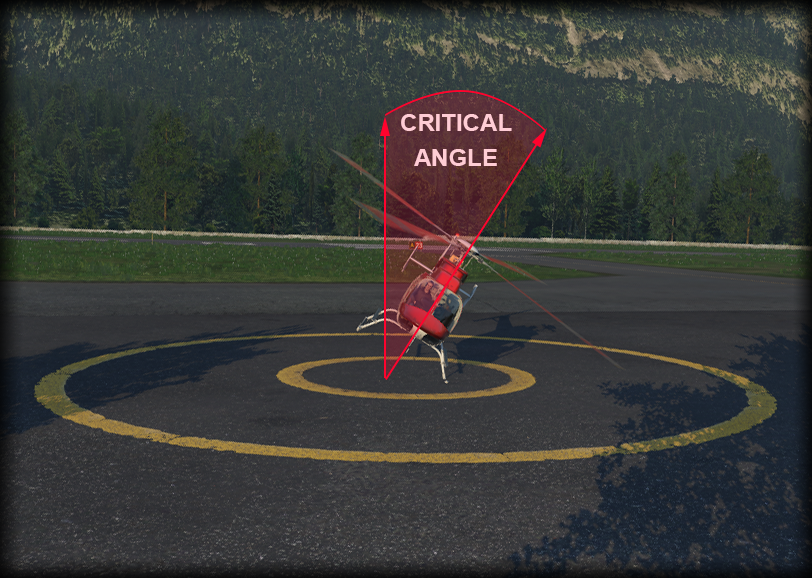
The helicopter falls over if the critical angle is exceeded and the skid/wheel is still in contact with the ground.
¶ Factors Influencing the Critical Angle
¶ Rate of Roll
The rate of roll during dynamic roll-over affects the critical angle. If the helicopter rolls into one direction with faster rates, the critical angle will be affected accordingly.
Faster roll rates increase the component encouraging roll and decrease the critical angle.
To avoid dynamic roll-over always apply smooth collective control and limit roll rate with opposite cyclic input.
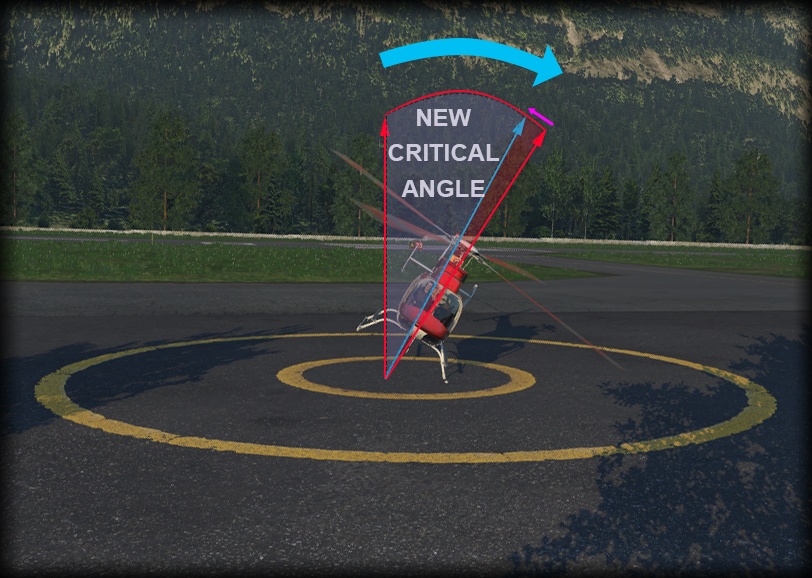
¶ Skid/Wheel
The tail rotor counteracts the torque effect created by the rotation of the main rotor by creating a lateral lift. During the dynamic roll, this thrust is added to or subtracted from the component encouraging roll. If the skid touching the ground is at the same side as the tail rotor thrust, this increases the total roll component and decreases the critical angle.
Tail rotor drift is to the right with counterclockwise rotating rotors and to the left with clockwise rotating rotors.
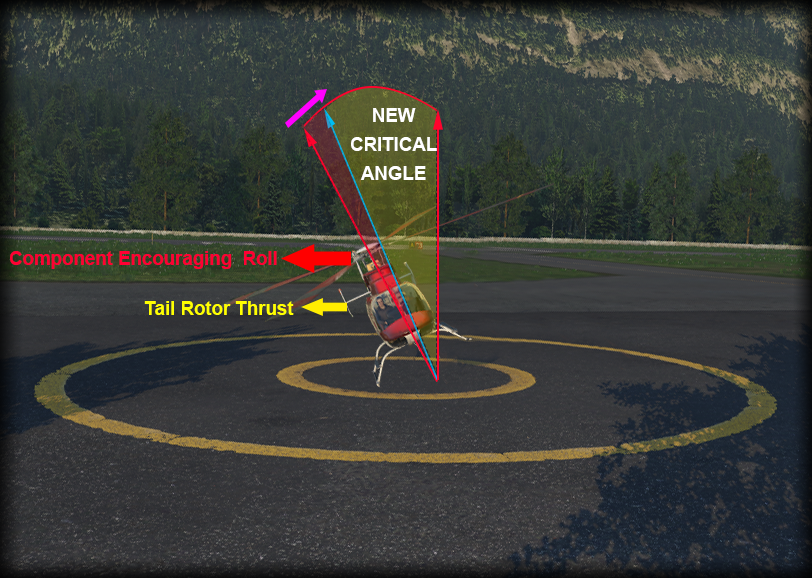
¶ Wind
Crosswind from the opposite side of roll increases the total roll component and decreases the critical angle.
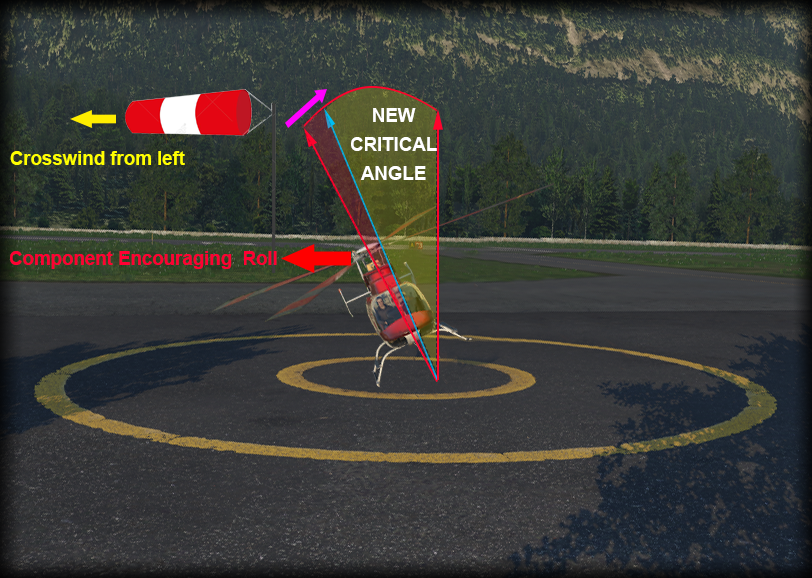
¶ Lateral CG
If the CG (Centre of Gravity) is not centered and deflected laterally to the side of the roll, the total cyclic input required to counter the roll increases and the critical angle decreases.
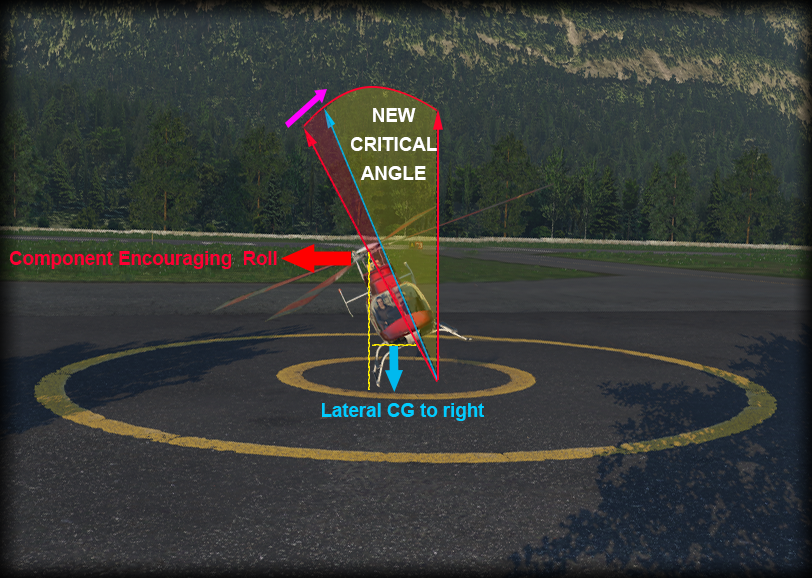
¶ Slope
A lateral slope to the side of the roll decreases the margin for the critical angle.
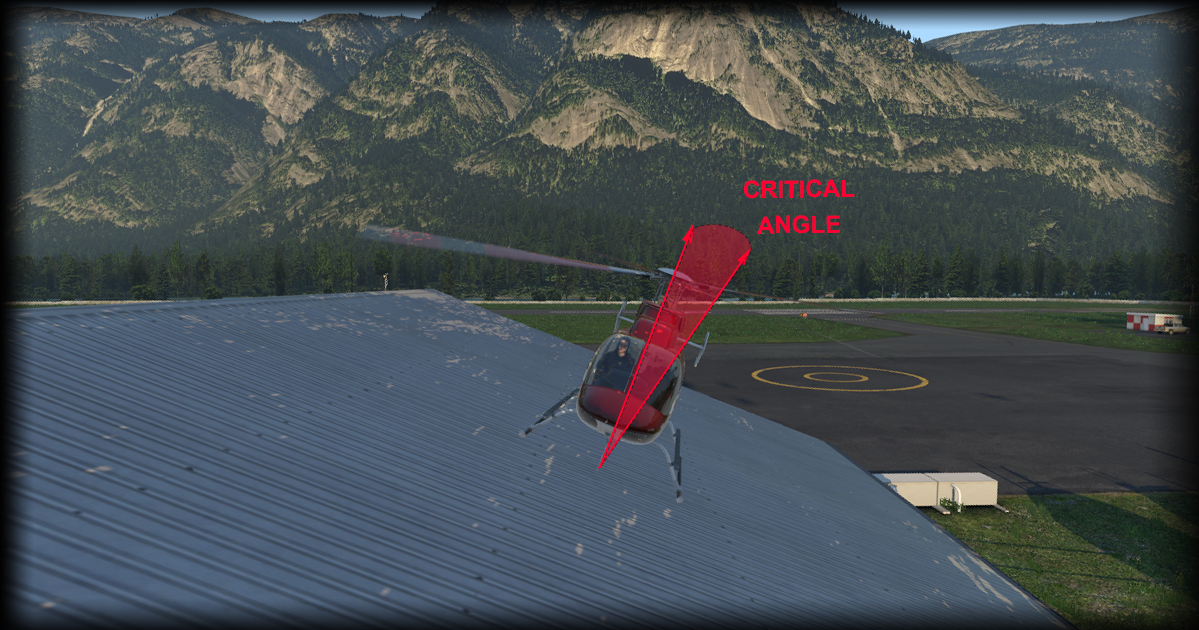
¶ Surface
A skid stuck to the ground (due to mud, ice or bush) can shift the center of gravity just enough to begin dynamic rollover.
¶ Low altitude sideways flying
An onset occurrence of a rollover is common when a skid or wheel inadvertently contacts the ground or an obstruction, or an animal, while flying sideways.
¶ Recovery
When a dynamic rollover starts and no cyclic input can stop the roll: lower the collective smoothly to reverse the roll.
If the collective is lowered abruptly, the helicopter may bounce onto the other skid and roll in the opposite direction.
- None
- VID 522050 - Creation
- VID 496402 - Wiki.js integration